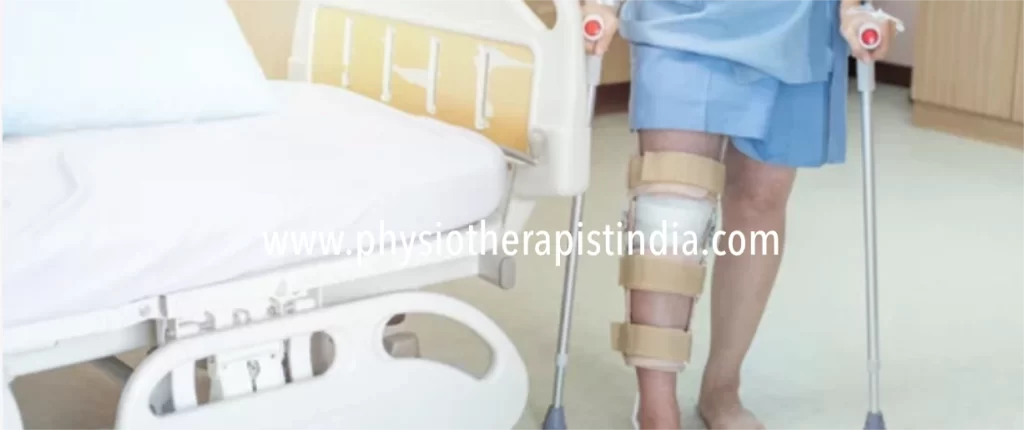
Navigating the Path to Recovery After Orthopedic Surgery
Table of Contents
ToggleRehabilitation after Orthopedic surgery is a significant step towards restoring function and mobility for individuals with musculoskeletal conditions such as fractures, joint injuries, or degenerative diseases. However, the road to recovery does not end with surgery; it is just the beginning of a journey towards regaining strength, mobility, and independence. Rehabilitation plays a vital role in this process, guiding patients through targeted exercises, hands-on therapy, and education to optimize recovery outcomes and improve quality of life. In this guide, we’ll explore the importance of rehabilitation after orthopedic surgery and provide insights into navigating the path to recovery effectively.
Understanding the Importance of Rehabilitation after Orthopedic Surgery:
- Restoring Function and Mobility: Orthopedic surgery aims to repair damaged tissues, realign bones, or replace joints to restore function and mobility. However, the success of the surgical procedure relies heavily on the effectiveness of rehabilitation in rebuilding strength, flexibility, and coordination in the affected area. Rehabilitation helps patients regain range of motion, improve muscle strength, and relearn movement patterns essential for daily activities.
- Preventing Complications: Orthopedic surgery, like any surgical procedure, carries risks of complications such as stiffness, weakness, swelling, and joint contractures. Rehabilitation interventions such as exercise therapy, manual therapy, and modalities help prevent these complications by promoting circulation, reducing inflammation, and restoring tissue integrity. Early mobilization and progressive loading of the affected area also contribute to minimizing the risk of post-operative complications.
- Enhancing Healing and Recovery: Rehabilitation after Orthopedic Surgery accelerates the healing process by promoting tissue regeneration, remodeling, and adaptation. Through targeted exercises and therapeutic interventions, rehabilitation stimulates blood flow, increases oxygenation to injured tissues, and facilitates the delivery of nutrients necessary for tissue repair. Additionally, hands-on therapy techniques such as massage and joint mobilization help break down scar tissue, improve tissue pliability, and enhance healing outcomes.
- Optimizing Functional Outcomes: The ultimate goal of Rehabilitation after Orthopedic Surgery is to optimize functional outcomes and improve quality of life for patients. By addressing physical impairments, functional limitations, and activity restrictions, rehabilitation helps patients regain independence in daily activities, return to work or sports, and participate fully in social and recreational pursuits. Through a combination of patient education, therapeutic exercises, and activity modification, rehabilitation empowers patients to achieve their functional goals and live life to the fullest.
Navigating the Path to Recovery After Orthopedic Surgery:
- Preoperative Education and Preparation: The journey to recovery begins before surgery with preoperative education and preparation. Patients should receive detailed information about the surgical procedure, expected outcomes, potential risks, and post-operative rehabilitation process. Preoperative exercises to optimize strength, flexibility, and joint mobility may also be prescribed to enhance surgical outcomes and facilitate recovery.
- Early Mobilization and Activity Progression: Following orthopedic surgery, early mobilization and activity progression are essential for preventing complications and promoting healing. Patients are encouraged to begin gentle movements and weight-bearing activities as soon as possible, under the guidance of a physiotherapist or occupational therapist. Gradual progression of activities, guided by pain and tolerance, helps build confidence, restore function, and minimize the risk of post-operative complications.
- Individualized Rehabilitation Program: Rehabilitation after orthopedic surgery is highly individualized and tailored to each patient’s specific needs, goals, and functional abilities. A comprehensive rehabilitation program may include a combination of therapeutic exercises, manual therapy, modalities, and patient education. Therapeutic interventions focus on improving range of motion, strength, proprioception, balance, and functional mobility in the affected area.
- Compliance and Adherence to Rehabilitation Protocols: Successful recovery after orthopedic surgery requires commitment and adherence to rehabilitation protocols both during supervised therapy sessions and at home. Patients are encouraged to actively participate in their rehabilitation program, perform prescribed exercises regularly, and adhere to activity restrictions and precautions provided by their healthcare team. Compliance with rehabilitation protocols plays a crucial role in achieving optimal outcomes and maximizing functional recovery.
- Progressive Return to Activities: As patients progress through rehabilitation and demonstrate improvements in strength, mobility, and function, they are guided through a gradual return to their pre-injury activities and interests. The timeline for returning to work, sports, or recreational activities varies depending on the type of surgery, individual recovery progress, and specific functional goals. Rehabilitation professionals work closely with patients to develop customized return-to-activity plans that prioritize safety, function, and long-term success.
Rehabilitation after orthopedic surgery is a critical component of the recovery process, essential for restoring function, preventing complications, and optimizing outcomes. By providing individualized care, evidence-based interventions, and ongoing support, rehabilitation professionals guide patients through the journey of recovery, empowering them to regain independence, mobility, and quality of life. Through education, early mobilization, progressive rehabilitation protocols, and a collaborative approach to care, patients can navigate the path to recovery with confidence and resilience, achieving their goals and returning to the activities they love.












